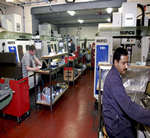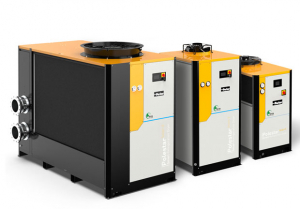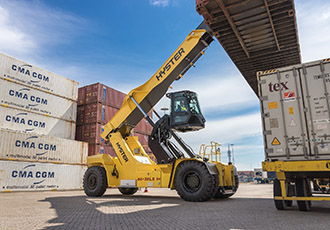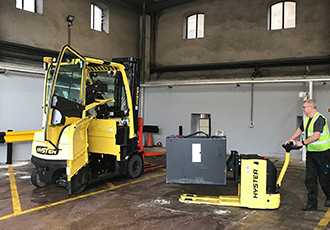MEDICAL PARTS PROGRAMMED SIX TIMES FASTER, BOOSTING OUTPUT BY 50 PER CENT
22nd July 2011
Source:
Hurco Europe Ltd

Galway-based subcontract machinist, Dawnlough, which specialises in manufacturing components for the medical industry, has bought equipment to the value of £1.5 million since 2005 to expand its design, production and inspection capabilities
The purchases include eight vertical machining centres (VMCs) and a driven-tool lathe from Hurco, supplied through local sales representative in Ireland, Michael Gannon.
Other investments include Solidworks / Solidcam CAD/CAM seats, a CMM and vision system from Mitutoyo, two Fanuc wire erosion machines and a Citizen sliding-head lathe. Financial assistance was secured through funding from Enterprise Ireland, the Government agency responsible for supporting Irish businesses in the manufacturing sector.
Established in 1990 by Brian McKeon's father, Patrick, the subcontractor started out as a general toolmaking company focusing on press tools. From the mid 90s, medical firms started springing up across Ireland, especially in the Galway area, and Dawnlough concentrated more and more on this sector.
Today, 100 per cent of its business is in the design and production of special-purpose jigs and fixtures to assist in the manufacture of catheters, stents and other items for treating vascular and neurovascular disorders. Dawnlough holds ISO 9001:2008 accreditation and is in the process of fulfilling the requirements for ISO 13485, which will confirm that its management system meets stringent requirements for the design and manufacture of medical devices.
One of the factors that kick-started the investment in Hurco machining centres was the length of time it took to program jobs on a pre-existing 3-axis VMC from another well-known supplier. At the time, Dawnlough operated a lot of manual machine tools but were keen to CNC everything, as director Brian McKeon put it, to raise component quality and accuracy.
He commented, Production here is mainly one-offs and small batches, so we wanted to be able to program each new part quickly on the shop floor, otherwise job preparation becomes too large a proportion of overall manufacturing time, reducing profitability.
Conventional G-code programming on our old VMC was really quite slow. So we looked around for a faster solution and homed in on the conversational Max CNC fitted to Hurco machines. The control is the compact, single-screen version of Hurco’s popular twin-screen Ultimax CNC.
The difference was staggering. We found we could program up to six times more quickly by manual data input at the Max control, and as we only make small quantities of parts, it has translated into a 50 per cent increase in production output overall.
He went on to say that from programming demonstrations performed in his office by Michael Gannon in 2005 using a dummy Max control, it was already clear that big savings were possible. The exercise was directly responsible for Dawnlough's purchase of the first Hurco machining centre, a VM3. It was joined two years later by a similar model, followed by a line of three smaller-capacity VM1s in 2009 and three of the updated VM10 version in 2010 and 2011. Of the eight Hurco VMCs currently on the shop floor, three are fitted with an integrated Hurco H200 rotary table to provide a fourth CNC axis that can also be programmed conversationally, directly at the control.
The more modern machines have controls equipped with Hurco's powerful, Windows-based WinMax software. Over 75 per cent of programs are prepared on the shop floor, rather than being downloaded from the CAD/CAD department, so the extra functionality of Winmax is proving particularly beneficial.
Even some complex 3D cycles are generated conversationally using the software's Swept Surface function, whereby a 2D surface is defined and swept along a contour to create a 3D geometry in a single data block. In addition to saving time, the continuous tool path generates a smoother surface finish.
Until the beginning of 2011, while efficient prismatic machining at Galway was firmly in place, the subcontractor was struggling with the turning element of some drawing packages. That was when the Hurco TMM8 CNC lathe was installed, with its capacity for producing components up to 256 mm diameter by 588 mm long.
The lathe is also driven by WinMax software, so rapidity and flexibility of programming is now enjoyed in respect of mill-turned parts as well. According to Mr McKeon, the accuracy of the lathe is particularly impressive, quality is better, lead time is quicker, and as batch sizes are also low for turned parts, profitability is up.
He explained that these benefits are particularly noticeable now that his operators have become more familiar with the lathe and are confident in exploiting the driven tooling. Floor-to-floor time for some of the more complicated components is 60 per cent shorter than when other lathes are used. An additional benefit of milling and drilling in-cycle on the TMM8 is that the machining centres are freed from performing these duties.
A wide variety of materials is machined by Dawnlough, from titanium and stainless steel to aluminium and plastics. General drawing tolerance of ±10 microns is easily held and good surface finish is achieved, resulting in components with the all-important aesthetic look so important in the medical industry.
Other investments include Solidworks / Solidcam CAD/CAM seats, a CMM and vision system from Mitutoyo, two Fanuc wire erosion machines and a Citizen sliding-head lathe. Financial assistance was secured through funding from Enterprise Ireland, the Government agency responsible for supporting Irish businesses in the manufacturing sector.
Established in 1990 by Brian McKeon's father, Patrick, the subcontractor started out as a general toolmaking company focusing on press tools. From the mid 90s, medical firms started springing up across Ireland, especially in the Galway area, and Dawnlough concentrated more and more on this sector.
Today, 100 per cent of its business is in the design and production of special-purpose jigs and fixtures to assist in the manufacture of catheters, stents and other items for treating vascular and neurovascular disorders. Dawnlough holds ISO 9001:2008 accreditation and is in the process of fulfilling the requirements for ISO 13485, which will confirm that its management system meets stringent requirements for the design and manufacture of medical devices.
One of the factors that kick-started the investment in Hurco machining centres was the length of time it took to program jobs on a pre-existing 3-axis VMC from another well-known supplier. At the time, Dawnlough operated a lot of manual machine tools but were keen to CNC everything, as director Brian McKeon put it, to raise component quality and accuracy.
He commented, Production here is mainly one-offs and small batches, so we wanted to be able to program each new part quickly on the shop floor, otherwise job preparation becomes too large a proportion of overall manufacturing time, reducing profitability.
Conventional G-code programming on our old VMC was really quite slow. So we looked around for a faster solution and homed in on the conversational Max CNC fitted to Hurco machines. The control is the compact, single-screen version of Hurco’s popular twin-screen Ultimax CNC.
The difference was staggering. We found we could program up to six times more quickly by manual data input at the Max control, and as we only make small quantities of parts, it has translated into a 50 per cent increase in production output overall.
He went on to say that from programming demonstrations performed in his office by Michael Gannon in 2005 using a dummy Max control, it was already clear that big savings were possible. The exercise was directly responsible for Dawnlough's purchase of the first Hurco machining centre, a VM3. It was joined two years later by a similar model, followed by a line of three smaller-capacity VM1s in 2009 and three of the updated VM10 version in 2010 and 2011. Of the eight Hurco VMCs currently on the shop floor, three are fitted with an integrated Hurco H200 rotary table to provide a fourth CNC axis that can also be programmed conversationally, directly at the control.
The more modern machines have controls equipped with Hurco's powerful, Windows-based WinMax software. Over 75 per cent of programs are prepared on the shop floor, rather than being downloaded from the CAD/CAD department, so the extra functionality of Winmax is proving particularly beneficial.
Even some complex 3D cycles are generated conversationally using the software's Swept Surface function, whereby a 2D surface is defined and swept along a contour to create a 3D geometry in a single data block. In addition to saving time, the continuous tool path generates a smoother surface finish.
Until the beginning of 2011, while efficient prismatic machining at Galway was firmly in place, the subcontractor was struggling with the turning element of some drawing packages. That was when the Hurco TMM8 CNC lathe was installed, with its capacity for producing components up to 256 mm diameter by 588 mm long.
The lathe is also driven by WinMax software, so rapidity and flexibility of programming is now enjoyed in respect of mill-turned parts as well. According to Mr McKeon, the accuracy of the lathe is particularly impressive, quality is better, lead time is quicker, and as batch sizes are also low for turned parts, profitability is up.
He explained that these benefits are particularly noticeable now that his operators have become more familiar with the lathe and are confident in exploiting the driven tooling. Floor-to-floor time for some of the more complicated components is 60 per cent shorter than when other lathes are used. An additional benefit of milling and drilling in-cycle on the TMM8 is that the machining centres are freed from performing these duties.
A wide variety of materials is machined by Dawnlough, from titanium and stainless steel to aluminium and plastics. General drawing tolerance of ±10 microns is easily held and good surface finish is achieved, resulting in components with the all-important aesthetic look so important in the medical industry.
Similar articles
More from Hurco Europe Ltd
- Four big launches at Hurco's 50th year at MACH 5th March 2018
- EDM company expands milling capacity with 5-axis machines 12th February 2018
- Machining solutions for simple and complex solutions 10th January 2018
- Aerospace subcontractor expands machining centre 20th December 2017




.jpg)







Write a comment
No comments